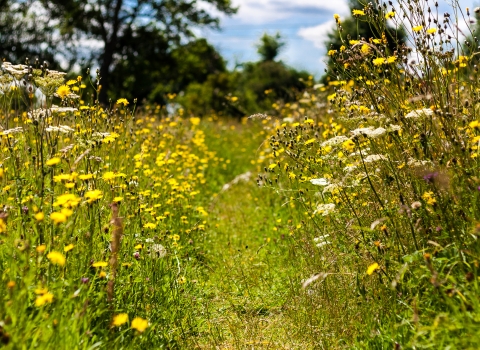In Worcestershire, we are custodians of around 20% of England's unimproved meadow resource. Even here, between 1975 and 2000 30% of our meadows were destroyed and 45% damaged. Since 2005, it’s estimated that 48 sites and another 240 hectares of grassland Local Wildlife Sites have been lost, damaged or reduced in condition. You can find out more on our Grasslands page. The Restoring Worcestershire's Grassland Project sought to help restore meadows across the county and help to reduce the rate of loss in Worcestershire.
The project
The Restoring Worcestershire's Grassland project ran from 2012-2015. It was funded by SITA Trust through the Landfill Communities Fund, with over £118,000 being provided to restore 110 hectares of lowland meadow across 21 sites. Many meadows are Local Wildlife Sites in private ownership and, working alongside landowners, we produced bespoke management plans to help ensure sympathetic meadow management for the next ten years. This was done in return for project-backed capital works.
Outcomes
The project used various interventions to deliver improved habitat on some of our most valuable grassland sites:
- Mowing and hay-cutting are fundamental to grassland management but the best results occur when this management is combined with grazing. At the beginning of the project most sites were already cut but couldn't be grazed due to inadequate or dilapidated fencing. The project funded fencing to create grazing compartments that allow stock rotation, thus ensuring that areas are “rested” and allowed to flower. New fencing also secured property boundaries so that grazing animals cannot escape.
- We de-silted, expanded and re-profiled neglected ponds that were becoming unviable habitat and were relatively devoid of wildlife.
- We pollarded trees in danger of collapse, potentially extending their lives whilst simultaneously reducing the risk of damage to fencing and hedge boundaries.
- We funded scrub removal where important grassland was being overrun with bramble.
- We helped with tree planting and tree-guard installation to replenish orchards that were falling into disuse and where landowners agreed to reduce grazing levels to benefit wild flowers.
- We spread green hay from nearby donor sites to enhance grassland communities at key locations.

